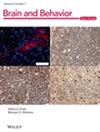Social Isolation Induces Sex-Specific Differences in Behavior and Gut Microbiota Composition in Stress-Sensitive Rats
Abstract
Background
Social isolation (SI) is an established rat model of chronic stress. We applied this to the stress-sensitive Wistar Kyoto (WKY) strain to explore brain-to-gut interactions associated with mood. Whether SI stress-induced behavioral changes are sex-specific or if they affect the microbiome in WKY is unknown. We hypothesized individually housed (IH) animals would be more anxious than pair-housed (PH), with sex differences. Male and female rats were either IH or PH from 70 to 112 days old and behavior was assessed in modified open field (OFTmod), elevated plus maze (EPM), and novel object recognition (NOR) tests. Cecal content DNA was analyzed by shotgun metagenome sequencing.
Results
IH rats, particularly females, spent more time in the center of the OFTmod where the semi-novel feed was presented compared to PH group rats. There was a tendency for greater distance traveled, or potential hyperactivity, in IH female rats. Males stayed in the EPM closed arms more than females. No treatment difference occurred for recognition memory. SI altered cecal microbiome composition in females where housing was associated with seven differentially abundant taxa and 49 differentially abundant KEGG Level 3 ortholog/gene categories. Several relationships were noted between behavioral traits and relative abundance of microbiome taxa. There was a greater shift in female microbiome composition.
Conclusions
In summary, behavioral responses to the housing treatment were minimal. IH animals, particularly females, spent more time in the center of an OFT that contained food; this may have been an indication of depression, as opposed to anxiety. Housing status had a differential impact on the microbiome for females compared to males. The associations between cecal microbiota and activity in the modified OFT suggest that dietary interventions that influence the relative abundance of Bifidobacteria, Alistipes, and Muribaculaceae should be explored.


 求助内容:
求助内容: 应助结果提醒方式:
应助结果提醒方式:


